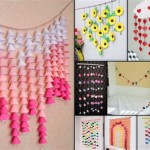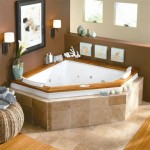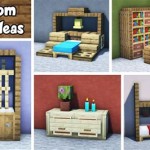Creative Ideas To Decorate a Nursery Room
Decorating a nursery is an exciting endeavor for expectant parents. It's a chance to create a nurturing and stimulating environment for the newest member of the family. This article explores various creative ideas to transform a nursery into a personalized haven, focusing on aesthetics, functionality, and safety.
Theme-Based Nurseries: Choosing a theme can provide a cohesive design direction. Popular themes include woodland creatures, nautical adventures, celestial bodies, and literary characters. The chosen theme influences color palettes, wall décor, furniture choices, and accessories, creating a unified and immersive experience.
Wall Décor: Walls offer a large canvas for creative expression. Decals provide an easy and affordable way to add visual interest, ranging from simple shapes to intricate designs. Murals, whether hand-painted or wallpapered, can transform an entire wall into a whimsical landscape or a captivating scene. Fabric wall hangings add texture and warmth, while framed artwork, including prints or original pieces, introduces artistic elements.
Creative Lighting: Lighting plays a crucial role in setting the mood and ambiance of the nursery. Soft, ambient lighting creates a calming atmosphere. A dimmer switch allows for adjusting the light intensity throughout the day. String lights add a touch of whimsy, while a statement chandelier or pendant light can become a focal point. Nightlights, essential for nighttime feedings and diaper changes, are available in various shapes and designs, adding both functionality and decoration.
Textiles and Fabrics: Textiles contribute significantly to the overall feel of the room. Crib sheets, blankets, and curtains in coordinated colors and patterns enhance the chosen theme or color palette. A rug defines the space and adds warmth underfoot. Cushions and throws offer comfort and decorative touches. Utilizing a variety of textures, such as knit, faux fur, and velvet, adds depth and sensory interest.
Storage Solutions: Keeping the nursery organized is essential for functionality. Shelving units provide display space for books, toys, and decorative items. Baskets and bins offer stylish storage for clothes, blankets, and other necessities. A designated changing area with ample storage for diapers and wipes streamlines diaper changes. Multi-functional furniture, such as ottomans with storage, maximizes space utilization.
Personalized Touches: Incorporating personalized elements adds a unique and sentimental touch to the nursery. Monograms on blankets, pillows, or wall art personalize the space. Framed photos of family members create a warm and welcoming atmosphere. Displaying handcrafted items, such as knitted blankets or crocheted toys, adds a personal touch. A customized mobile above the crib provides visual stimulation for the baby.
DIY Projects: Engaging in DIY projects offers an opportunity to personalize the nursery while saving money. Repurposing existing furniture, such as painting a dresser or refinishing a rocking chair, gives old items new life. Creating artwork, such as framed handprints or footprints, captures precious memories. Sewing curtains or crib bedding allows for complete customization. Building shelves or storage boxes adds a personal touch and addresses specific storage needs.
Focus on Functionality: While aesthetics are important, functionality should remain a primary consideration. Ensure sufficient space for movement and easy access to essential items. Place the crib away from windows and drafts. Install childproof locks on cabinets and drawers. Secure any loose cords or wires. Choose furniture with rounded edges to minimize the risk of injury.
Sustainable Choices: Creating an eco-friendly nursery benefits both the baby and the environment. Opt for furniture made from sustainable materials, such as bamboo or reclaimed wood. Choose organic cotton for bedding and textiles. Use low-VOC paints to minimize exposure to harmful chemicals. Select energy-efficient lighting options. Repurpose and upcycle existing items whenever possible.
Growth and Adaptability: Designing a nursery that can adapt to the child's growth saves time and resources in the long run. Choose a crib that converts into a toddler bed. Select furniture that can serve multiple purposes, such as a dresser that can later be used as a changing table. Opt for décor that can transition easily from infancy to childhood. This forward-thinking approach ensures the nursery remains a functional and comfortable space for years to come.
Sensory Stimulation: Incorporating elements that stimulate the baby's senses promotes development and engagement. A mobile with contrasting colors and patterns captivates the baby's attention. A play mat with various textures and sounds encourages exploration. Soft toys and books provide tactile and visual stimulation. Introducing a variety of sensory experiences creates a stimulating and enriching environment.
By considering these creative ideas and focusing on safety, functionality, and personalization, parents can transform the nursery into a welcoming and nurturing space for their little one.

27 Unique Nursery Ideas From Designer Baby Rooms
:max_bytes(150000):strip_icc()/acf035_76d222edea6944beaae1d282c9016331mv2-ed8fe09e43ee4bc89527af58d4070433.jpeg?strip=all)
40 Baby Room Ideas For Decorating A Nursery That S Unique

18 Creative Nursery Wall Ideas Design Studio

27 Unique Nursery Ideas From Designer Baby Rooms

46 Baby Boy Nursery Ideas For A Perfect Room

Nursery Wall Decor Ideas You Won T Find On

Pin On Summer Soon

Creative Baby Room Ideas For New Pas

Pin On Bubs Bedroom

46 Baby Boy Nursery Ideas For A Perfect Room
Related Posts







